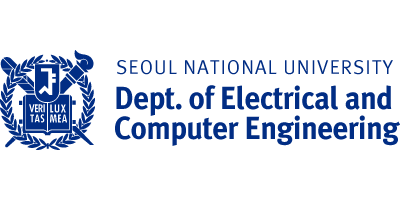[Hyuk-Jae Lee’s Chip Behind] The semiconductor technology war and Korea’s hidden card (Seoul Economy, 2023.08.26)
Hyuk-Jae Lee, professor at the SNU Dept. of Electrical and Computer Engineering
Value of semiconductor rapidly increasing with microfabrication
Another chance for development has arrived with the advent of AI
When PIMs are commercialized, it is expected that Korea will lead the market
Until TSMC was founded in Taiwan in 1987, the foundry industry had relatively low added value. The added value of the fabless industry, which did not have semiconductor manufacturing facilities and focused solely on product design, was high. Foundries, which received product designs from these fabless companies for contract manufacturing, were subcontractors. Utilizing appropriate semiconductor fabrication equipment for production was not highly technical, and instead, creating high-performance fabrication equipment was more challenging. Due to such circumstances, U.S. companies focused on high-value fabless and fabrication equipment technologies, while the low-value foundry industry was handed over to Taiwanese companies like TSMC or UMC.
The increased importance of the foundry industry is due to the rise in technological complexity resulting from fabrication miniaturization. Only TSMC, Samsung Electronics, and Intel have succeeded in developing sub-7-nanometer ultra-fine processes, and the value of these companies has surged rapidly.
If Taiwan is a powerhouse in the foundry industry, then South Korea is undoubtedly the dominant player in another sector of the semiconductor industry – the memory industry. Similar to the foundry industry, the memory semiconductor industry also began in the United States but shifted to Japan before eventually making its way to South Korea due to its decreasing added value. Intel originally developed DRAM semiconductors, but the intense competition brought about by Japanese companies in the 1980s led Intel to shift its focus towards higher-valued central processing units (CPUs) and put less emphasis on memory. Currently, similar to the foundry industry, the added value in the memory industry is gradually increasing, presenting new opportunities for Korea.
With the emergence of ChatGPT earlier this year, the semiconductor industry is once again presented with an opportunity for development. Particularly, graphic processing units (GPUs) and high-bandwidth memory (HBM), both of which were AI semiconductor components used in the development of ChatGPT, are gaining significant attention. However, while NVIDIA, a company that produces GPUs, has seen a significant increase in its revenue, domestic memory companies that produce HBM are not experiencing simillar growth. This is because NVIDIA purchases HBM at a relatively low cost and then combines it with GPUs to sell at a higher price.
Domestic companies are developing new Processing in Memory (PIM) semiconductor technologies in this AI era to enhance the value of memory semiconductors. PIM, as the name suggests, incorporates processing capabilities within memory semiconductors for AI computations. This novel semiconductor reduces the need for data transfer between memory and GPUs, dramatically reducing power consumption and time delays. It is highly anticipated that PIMs are significantly more efficient for AI than GPUs.
Research on commercializing PIM semiconductors is particularly active in South Korea. If PIM is commercialized, South Korea can reap the most benefits. Currently, the center of the semiconductor technology war lies in the foundry industry, with the most critical weapon being the fabrication miniaturization technology. However, with the commercialization of PIM, the main battleground will shift to memory devices, and South Korea can lead the market. Though not widely known yet, the PIM semiconductor, a powerful weapon that Korea is developing, hold the potential to push our semiconductor industry to a higher level.
Source: https://ece.snu.ac.kr/ece/news?md=v&bbsidx=53914
Translated by: Do-Hyung Kim, English Editor of the Department of Electrical and Computer Engineering, kimdohyung@snu.ac.kr


